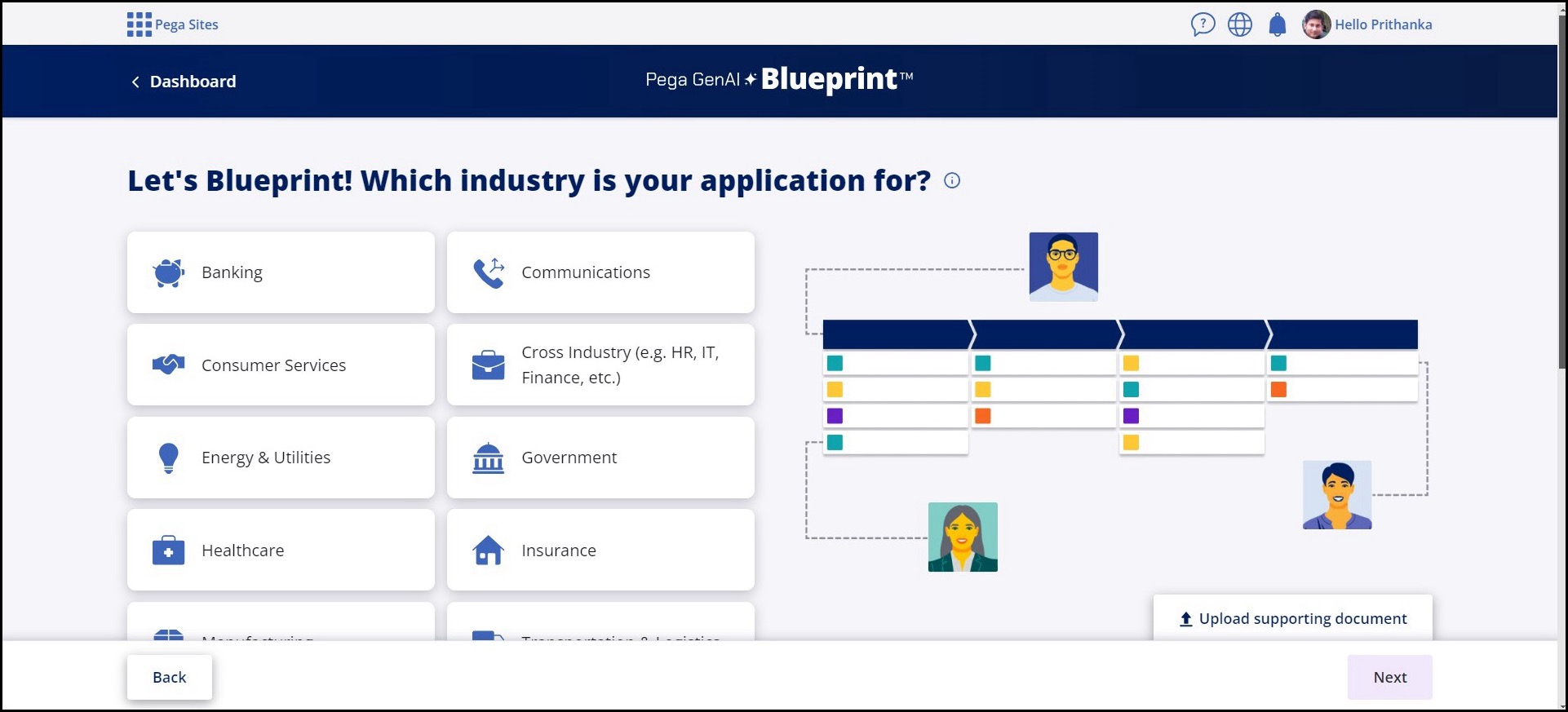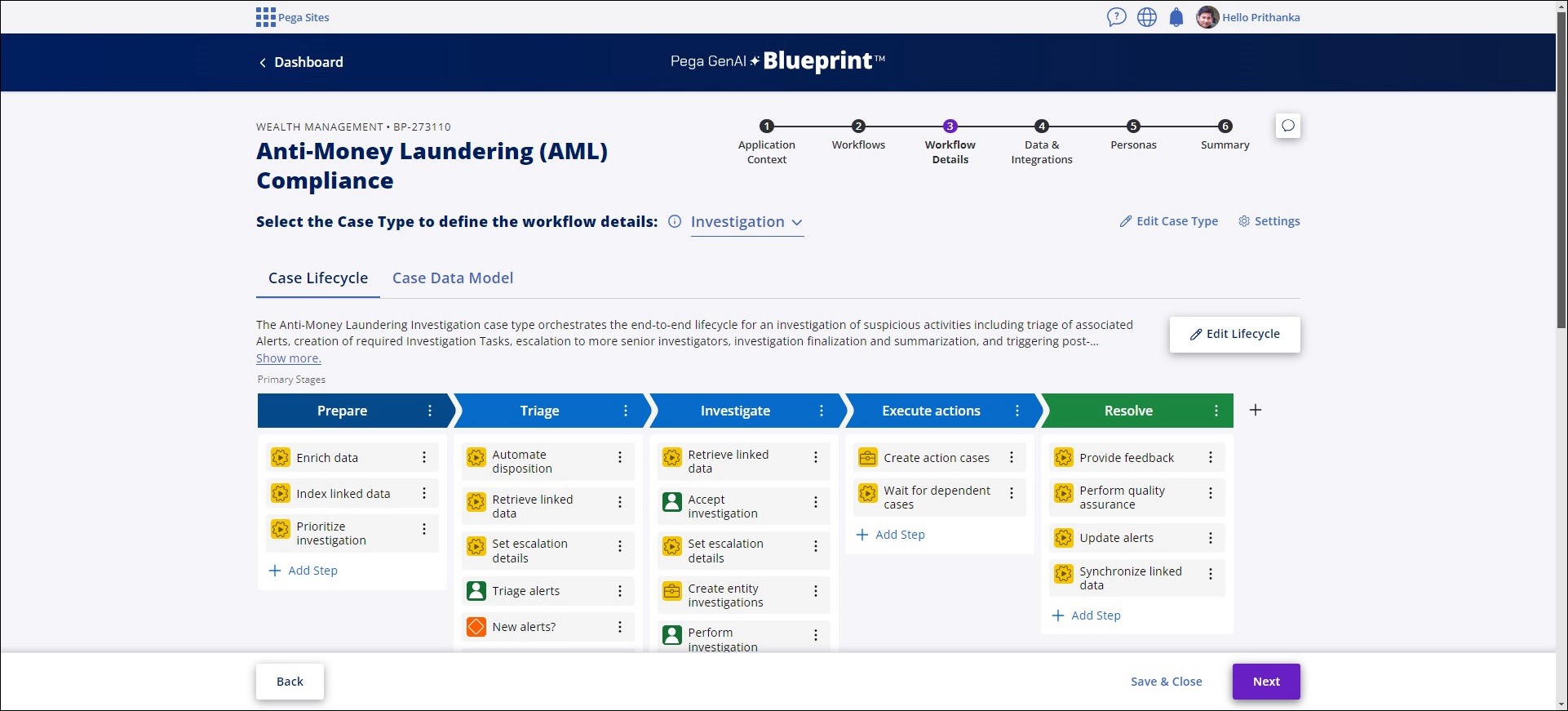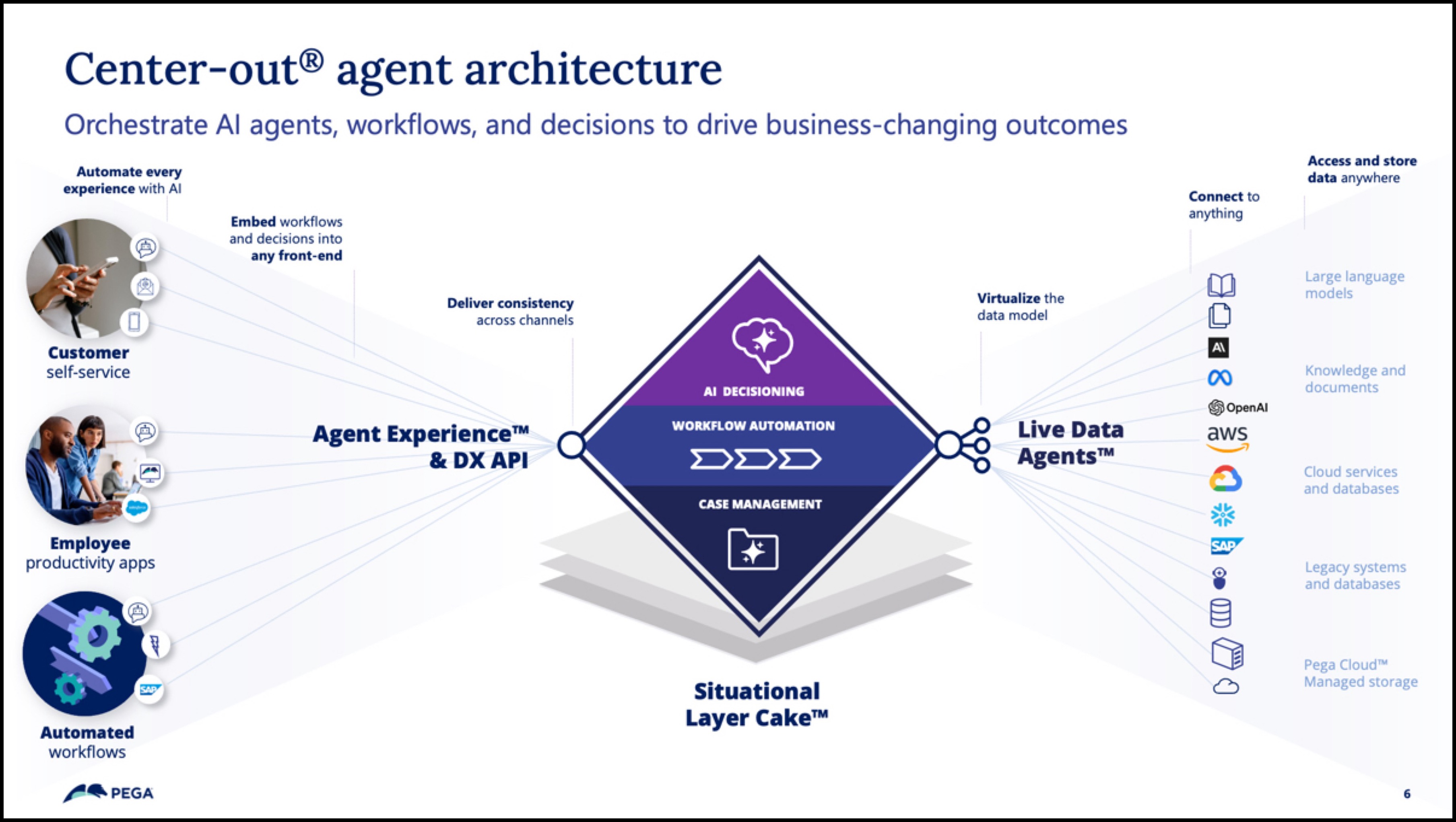Introduction: The low-code revolution in enterprise software
In today's fast-paced technology landscape, enterprises often face unprecedented pressure to modernize systems, enhance customer experiences, and innovate, while maintaining agility and operational efficiency. Traditional software development approaches often fall short of these demands, requiring months of effort and substantial resource allocation.
Low-code development platforms have emerged as the solution, enabling businesses to accelerate application development with minimal hand-coding while fostering greater collaboration between IT and business teams. As organizations embrace digital transformation, the question isn't whether to adopt low code — it's which platform can provide the greatest value.
In this blog, we explore how Pega Infinity™ is leading the low-code revolution to deliver enterprise-grade solutions that combine speed, flexibility, and power.
What exactly is low-code development?
Low-code development simplifies application creation through intuitive visual interfaces, pre-built components, and minimal manual coding. This approach allows both developers and business users to build applications rapidly, addressing business challenges with unprecedented speed and precision while fostering collaboration between business stakeholders and IT teams.
The key advantages include:
- Accelerated development: Build and deploy applications in days/weeks rather than months/years
- Greater business collaboration: Enable both business and technical stakeholders to actively participate in the development process
- Faster innovation: Quickly adapt to changing market conditions and customer expectations
- Reduced technical debt: Minimize complex custom code that becomes difficult to maintain
Analyst perspectives on the future of low code
Industry analysts consistently highlight the growing significance of low code in enterprise software development. Leading research firms such as Gartner, Forrester, and IDC have provided insightful predictions on the trajectory of low-code development through 2025. Here's a consolidated overview of their key forecasts:
Market growth and adoption
- Gartner anticipates that by 2025, over 70% of new applications developed by enterprises will utilize low-code or no-code technologies, a significant increase from less than 25% in 2020.
- Forrester estimates that the combined low-code and digital process automation (DPA) market reached $13.2 billion by the end of 2023. Looking ahead, they project this market could approach $50 billion by 2028, driven by factors such as the rise of citizen development and AI integration.
Rise of business-led development
- Gartner predicts that by 2026, 80% of users of low-code applications will be outside formal IT departments, up from 60% in 2021. This shift underscores the growing empowerment of business users in application development.
- Forrester highlights that 87% of enterprise developers already use low-code development platforms for at least some of their work, indicating widespread adoption across organizations.
Integration with AI and automation
- IDC notes that low-code platforms are increasingly incorporating AI capabilities, enhancing functionalities such as process automation and decision-making. This integration is expected to accelerate application development and improve efficiency.
- Forrester discusses the potential impact of AI on low-code development, suggesting that AI could either accelerate the adoption of low-code platforms by making development more accessible or, conversely, reduce reliance on low-code by enhancing traditional coding productivity.
In summary, the low-code development landscape is poised for substantial growth through 2025, characterized by increased adoption across various organizational levels, integration with emerging technologies like AI, and a significant shift in development responsibilities from IT departments to business users.
Pega Infinity: The enterprise leader in low-code development
Pega has established itself as a leader in enterprise low code by going beyond basic visual development tools. Pega Infinity integrates comprehensive low-code capabilities with AI-driven decisioning, intelligent process automation, and robust Case Management to provide a complete platform for digital transformation.
Let's explore some of the key capabilities that set Pega apart in the Low-Code landscape:
1. Pega GenAI Blueprint: bridging business vision and technical execution
Why it matters: Business requirements often get lost in translation during technical implementation, leading to applications that don't fully address business needs.
Pega GenAI Blueprint™ is a new, collaborative, AI-infused workspace where teams can quickly design new digital transformation projects. Pega Blueprint serves as a powerful visualization and collaboration tool within the Pega Infinity ecosystem that bridges the gap between business vision and technical execution. It enables stakeholders across the organization, including business and IT, to collaboratively define what an application should do, ensuring that solutions truly meet business objectives before actual application building happens.


Key Blueprint capabilities include:
- Visual process mapping: Business users can visually map processes, customer journeys, and application flows without technical knowledge
- Direct-to-application generation: Process maps are automatically converted into working application structures within Pega Platform
- Integration with App Studio: Seamless transition from high-level design to detailed implementation
Blueprint complements Pega Infinity's current delivery approach, which helps teams focus on outcomes rather than requirements. Starting with customer journeys and working backward ensures that applications deliver what matters most to users and the business.
2. The power of a unified platform and a generative AI-infused App Studio
Why it matters: Many organizations struggle with fragmented technology stacks that create data silos and inconsistent customer experiences.
The unified Pega Infinity suite offers a decisive competitive advantage for organizations seeking a low-code development solution. Unlike competitors with fragmented tools cobbled together through acquisitions, Pega's cohesive architecture integrates process automation, customer engagement, and AI-powered decisioning in a single Data Model and development environment. This unified approach eliminates silos, enables seamless business-IT collaboration through visual models, and centers development around customer journeys rather than disparate systems. The result is exceptional adaptability to changing business requirements, consistent governance across applications, and superior Case Management capabilities that deliver faster time-to-value and greater long-term flexibility for enterprises undertaking digital transformation initiatives.
App Studio represents a significant advancement in a low-code development environment, offering compelling reasons for organizations to choose Pega as their preferred platform. Its key strengths include:
Democratized Application Development
- True business-led development: Unlike competitors that merely simplify technical development, App Studio empowers business users to directly create functional applications that solve real problems without deep technical knowledge.
- Guided experience: The intuitive interface uses AI-assisted guidance and templates to help users quickly build enterprise-grade applications through visual configuration rather than coding.
- Skill-appropriate tools: App Studio adapts to different user skill levels, providing simplified interfaces for business analysts while allowing seamless handoff to more technical developers for complex requirements.
Enterprise-grade applications without compromise
- Built-in governance: Applications maintain compliance with organizational standards and best practices through automated guardrails.
- Pre-Built components: Users can leverage a comprehensive library of pre-configured, reusable components that accelerate development.
- Production-ready quality: Automated testing and quality checks ensure applications meet performance and security requirements.
The power of App Studio lies in its ability to empower business users to create meaningful, enterprise-grade applications while maintaining governance and seamless collaboration with IT, a balance that many low-code platforms struggle to achieve. With the integration of generative AI, Pega takes this a step further by accelerating development, enhancing usability, and simplifying the design-to-deployment journey. Generative AI features are embedded throughout App Studio, which enables users to rapidly translate ideas into functional applications, significantly reducing development time and fostering even deeper collaboration between business and IT teams.


3. Center-out architecture: Building for the future
Why it matters: Traditional development approaches often create application silos that are difficult to maintain and expensive to adapt as business needs change.
Pega's unique Center-out® architecture starts with core business processes and logic rather than interfaces or channels. This approach creates a solid foundation of reusable elements that can be leveraged across multiple applications, ensuring consistency while accommodating channel-specific requirements.
The Center-out approach is implemented through Pega's powerful Case Management framework, which enables organizations to model business processes as interconnected Cases and Microjourneys®. This framework reduces redundancy while enabling specialization for different business units, products, or geographies.

4. AI-powered decisioning: Intelligence built in
Why it matters: Organizations need to deliver personalized experiences and make intelligent decisions at scale, without requiring data science expertise for every application.
Pega Infinity embeds AI and advanced analytics directly into the application development process, enabling intelligent automation, personalized customer journeys, and optimal decision-making at every interaction.
Key capabilities include:
- Real-time decisioning: With Pega decisioning, businesses can make decisions in the moment and respond quickly to changing customer needs and circumstances.
- Prediction Studio: Enables business users to create and deploy machine learning models without coding.
- Predictive and adaptive modeling: Pega decisioning uses predictive and adaptive analytics to analyze customer data and predict their behavior. With these analytics, businesses can proactively identify opportunities and personalize interactions.
- AI-Powered Next Best Actions: Pega decisioning leverages AI and machine learning to determine the most effective course of action for each customer interaction.
- Centralized Decision Hub: Pega Customer Decision Hub™ provides a centralized platform for managing and running all decisioning activities. Businesses can implement Customer Decision Hub to unify customer experiences across channels and at scale.
5. Enterprise-grade governance and security
Why it matters: While speed is important, enterprise applications must also meet strict governance, security, and compliance requirements.
Pega Infinity embeds governance, security, and compliance capabilities, which makes it ideal for regulated industries like healthcare, financial services, and government.
Key security and governance features include:
- Secure cloud solutions: Pega Cloud® provides stringent security measures that adhere to industry standards and regulations.
- Government agency compliance: Pega's solutions, such as those offered with AWS GovCloud, are designed to meet the security needs of government agencies, including those with sensitive workloads.
- Built-in security features: Pega Infinity's model-driven architecture incorporates security features, reducing the need for external security vendors or custom code.
- Compliance certifications: Pega's commitment to security is reflected in certifications such as HITRUST and FedRAMP High.
- Data protection: Pega provides features for confidentiality and encryption to protect sensitive data.
Conclusion: Transform your business with low-code
Low-code development has evolved from a niche approach to a mainstream strategy for digital transformation. As businesses face increasing pressure to innovate quickly while optimizing resources, low-code products such as Pega Infinity offer a compelling solution.
With its unique combination of visual development tools, AI-driven automation, and enterprise-grade capabilities, Pega Infinity enables organizations to deliver applications that truly transform business operations and customer experiences.
Whether you're looking to modernize legacy systems, streamline operations, or create innovative customer experiences, Pega Infinity provides the tools to accelerate your journey while ensuring security, compliance, and scalability.
Ready to explore how Pega Infinity can accelerate your digital transformation? Contact our team today for a personalized demonstration and discover how leading organizations in your industry are achieving breakthrough results. For customer success stories, visit our customer showcase.
Related Resources
Low-Code Development: Trends and Predictions for 2025
The Low-Code Market Could Approach $50 Billion By 2028
Gartner forecast: Use of low-code technologies continues to boom
Forrester predicts three possible outcomes for the future of low code
Learn more in Pega's Blueprint documentation
Intelligent Automation capabilities of the Pega Platform
Learn more - Building from the Center-out
Learn more about Pega's Decisioning capabilities
Pega attaining FedRAMP high authority to operate for US Federal Government clients


